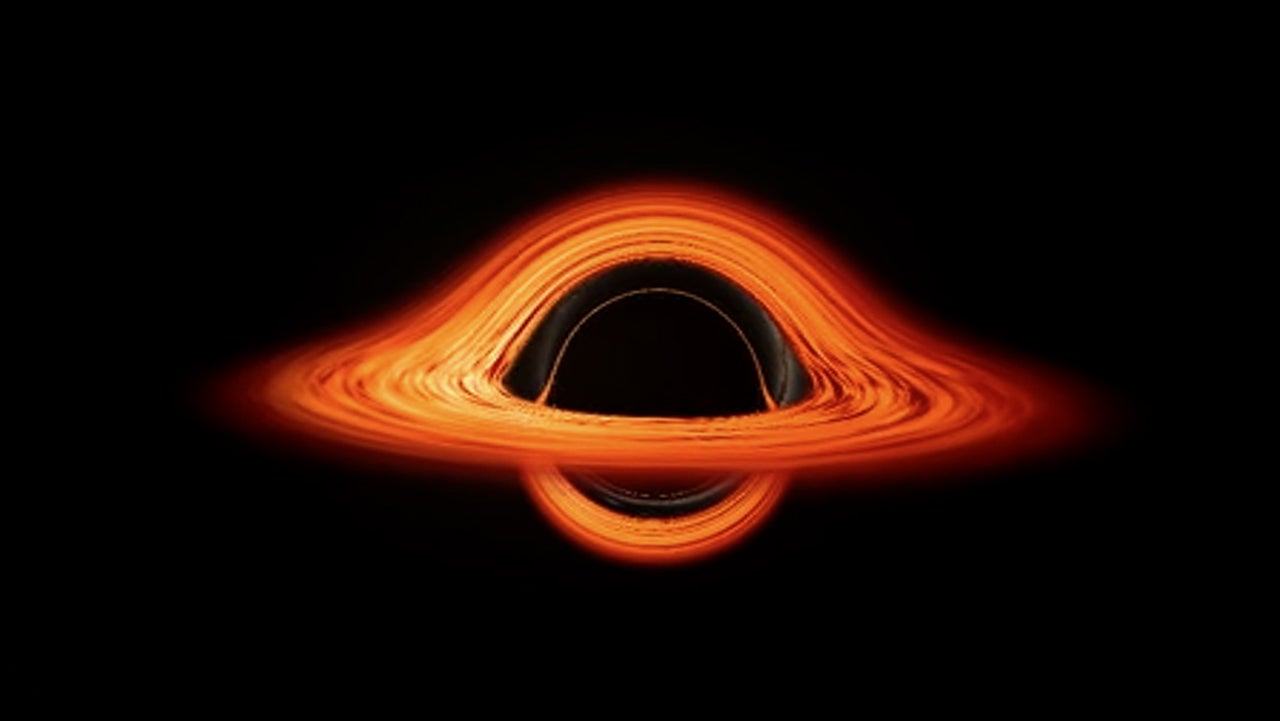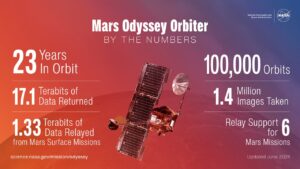Supermassive black holes are capable of violently devouring entire stars and warping the very fabric of space-time with their almost incomprehensible mass and gravitational influence. Their awesome power and mysterious nature have captured the imagination of generations of scientists and artists, ranging from Albert Einstein to Christopher Noland, who have sought to make the unknowable understandable through their works of audiovisual art and ground-breaking research.
Now, a new set of NASA supercomputer simulations is giving the public a close-up look at the reality-altering influence of these cosmic leviathans, showing them what it would be like to travel through the event horizon of a supermassive black hole with a mass equivalent to 4.3 million suns .
“People often ask about this, and simulating these hard-to-imagine processes helps me connect the mathematics of relativity to actual consequences in the real universe,” explained NASA astrophysicist Jeremy Schnittman of the Goddard Space Flight Center in Greenbelt, Maryland, who worked to create of visualizations. “So I simulated two different scenarios, one where a camera — a stand-in for a brave astronaut — just skips the event horizon and turns back, and one where it crosses the border, sealing its fate.”
Have you ever wondered what happens when you fall into a black hole?
Thanks to a new, fascinating visualization created on a NASA supercomputer, we begin #BlackholeWeek with a virtual dive into the event horizon – a black hole point of no return: https://t.co/aIk9MC1ayK pic.twitter.com/CoMsArORj4
— NASA (@NASA) May 6, 2024
The simulations were made by Schnittman and his NASA colleague Brian Powell using the Discover supercomputer located at NASA’s Climate Simulation Center. According to the agency, a typical laptop would have taken about a decade to handle the monumental task, but Discover’s 129,000 processors were able to compile the visualizations in just five days, using just 0.3 percent of its computing power.
The singularity at the heart of the simulations was designed to have roughly the same mass as the monstrous supermassive black hole lurking at the heart of the Milky Way known as Sagittarius A* (Sgr A*). As explained by Schnittman, the incredible size of a supermassive black hole can work to the astronauts’ advantage, helping them survive right up to the point where the intrepid explorer passes through the event horizon, at which point they will be torn apart by a process known as spaghettification. .
“The risk of spaghettification is much greater for small black holes on the order of the mass of our sun,” Schnittman said in an email to IGN. “For them, the tidal forces would really rip apart any normal spacecraft long before it reached the horizon.” For supermassive black holes like Sgr A*, the horizon is so large that it looks and feels flat, just as a ship in the ocean doesn’t run the risk of ‘falling over the horizon’ even though it could easily fall over a waterfall in a small river.”
“To calculate the exact point of spaghettification, we used the force of a typical human body, which probably wouldn’t survive more than 10g of acceleration, so that’s the point at which we declared the camera destroyed,” the NASA astrophysicist continued. “For Sgr A*, this corresponds to only 1% of the event horizon radius. In other words, the camera/astronaut crosses the horizon and then still survives 99% of the way to the singularity before being ripped apart. Or burned by the intense radiation, but that’s a story for another day.
As for what would an intrepid explorer actually see when he plunges into one of the darkest pockets of the universe? Well, as its name suggests, the singularity at the center of a black hole is impossible to observe directly due to the fact that its gravity prevents even light itself from escaping the event horizon after passing through it. However, astronomers are able to observe the glowing mass of superheated material surrounding a black hole settling into a flat disk as it is pulled inexorably towards the event horizon.
NASA supercomputer visualizations reveal in magnificent detail how the mass of 4.3 million suns can work to radically distort light from a flat accretion disk. Each simulation begins with the viewer looking into the black hole from a distance of about 400 million miles. From here, the cosmic leviathan’s gravitational influence can now be observed as it manipulates the light in the disc to frame the top and bottom of the event horizon, echoing the appearance of the Gargantua black hole seen in Christopher Noland’s 2014 film “Interstellar”.
As the journey continues, the influence of the supermassive black hole intensifies to create a kaleidoscope of changing photon lines that grow thinner as the would-be astronaut approaches and passes through the event horizon.
NASA has uploaded multiple versions of the simulations to YouTube, including a 360-degree YouTube video that allows viewers to freely look around as they fall into the deepest pits of space, or alternatively travel to escape the gravitational pull of the insatiable singularity . Some of the videos also show information about camera perspective and how relativistic effects such as time dilation – a phenomenon where time flows at different rates for different observers depending on where they are and the speed at which they are moving – would affect man as he approaches the singularity.
Check out this IGN article for an explanation of what time dilation is and how it can be a headache for future astronauts exploring distant stars. For more astronomy news, why not read about a once-in-a-lifetime stellar explosion due to be visible from Earth later this year, or find out how millions of borderlands players have been collectively listed as authors of a peer-reviewed scientific study.
Image credit: NASA
Anthony is a freelance contributor covering science and video game news for IGN. He has over eight years of experience covering groundbreaking developments in multiple scientific fields and has absolutely no time for your antics. Follow him on Twitter @BeardConGamer



